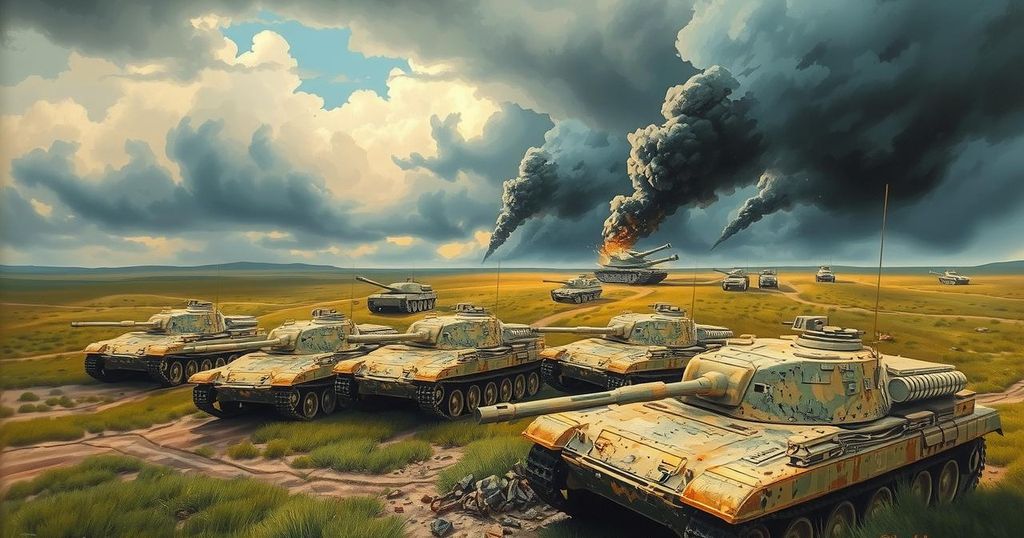The freeze on U.S. military aid to Ukraine has destabilized its defense strategies, as highlighted by contrasting claims from both Russian officials and Ukrainian servicemen. The lack of support, particularly in satellite reconnaissance and advanced armaments, hampers Ukraine’s military response against Russian forces, intensifying local anxieties. Despite recent victories and innovative developments, the dependency on international military aid continues to be a pressing concern for Ukraine’s security.
The suspension of military aid to Ukraine has significantly impacted the efficacy of its armed forces, prompting changes in strategy and creating fear among the local populace. Dmitry Medvedev, a prominent Russian security official, recently praised Russian servicemen for their rather precarious infiltration tactics, claiming their successes as evidence of progress against Ukraine. In contrast, a Ukrainian serviceman revealed that most of those who attempted the infiltration were ambushed and suffered casualties during the operation.
The disengagement of support from the United States, particularly under the direction of President Donald Trump, has contributed to Ukraine’s military difficulties. Lt Gen Ihor Romanenko noted that the aid freeze, which commenced on March 3, includes vital reconnaissance satellite data previously essential for Ukraine’s defense. Since the 1990s, western guidance prompted Ukraine to dismantle most of its Soviet-era weaponry, resulting in a current dependence on foreign military support.
President Volodymyr Zelenskyy emphasized that Trump’s decision could primarily benefit Russian military efforts. Without crucial satellite information, Ukraine’s air defense capabilities have diminished significantly, making it more challenging to counter pervasive drone threats. Romanenko highlighted that UK and French allies are now pivotal in providing alternatives, while Ukraine continues to carry out drone attacks on Russian targets, including a recent strike on an oil refinery.
However, the suspension of aid extends beyond mere strategic implications; it critically affects the availability of high-cost arms such as the Patriot missile systems. Ukraine reportedly lacks the necessary stockpiles for these vital defense technologies, complicating its ability to respond effectively to Russian missile attacks.
Moreover, the sentiments among citizens reflect deep concern regarding the ongoing conflict. Mariya Minchenko, an ambulance paramedic in Kyiv, expressed despair over the aid freeze impacting her community’s safety during bombings, leading to increased anxiety among residents. In this context, Ukrainian arms developers have sought to enhance their domestic production capabilities, including the development of cost-effective drones and jamming technologies to counter enemy forces.
A recent tactical victory was achieved when Ukrainian forces regained control of the town of Kotlyno, thwarting Russian advances. Military analysts credit Major-General Mykhailo Drapatyi for revitalizing the command structure and fostering coordination among units, showcasing resilience amid adversity.
While the current situation remains precarious for Ukraine, effective leadership and innovative approaches may provide pathways toward sustaining its defense against a challenging adversary.
In summary, the suspension of U.S. military aid under President Trump poses significant challenges to Ukraine’s ongoing conflict with Russia, affecting strategic operations and local morale. As Ukraine adapts by enhancing domestic production of defense technologies, recent minor victories illustrate a persistence bolstered by leadership changes. However, the continued reliance on foreign support remains evident in the critical shortages of advanced weaponry, highlighting the complex nature of modern warfare.
Original Source: www.aljazeera.com




